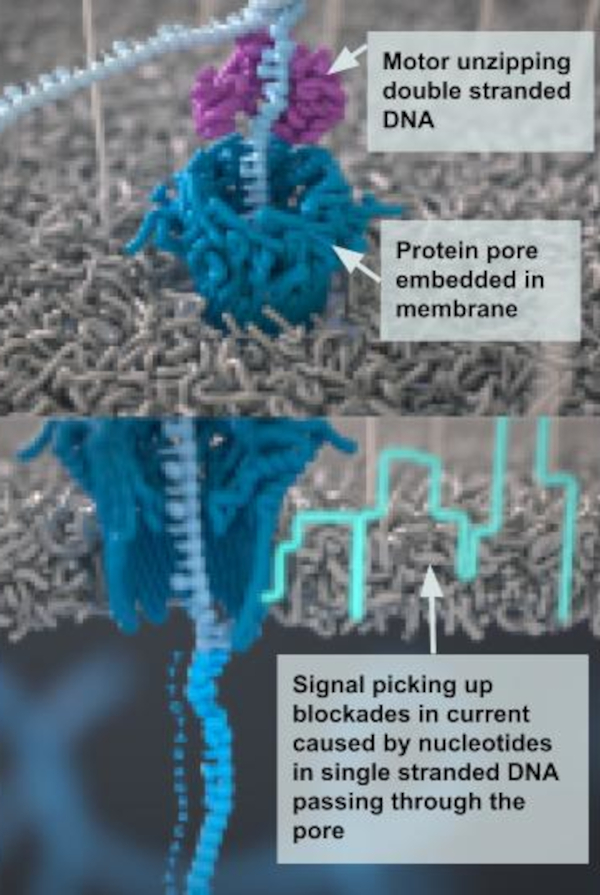
1. Billions of patients have now received #mRNA #COVIDvaccines. First found in 1956 by Elliot Volkin and Lazarus Astrachan, this series of tweets covers the many decades it took for mRNA to emerge as a medical tool whatisbiotechnology.org/index.php/scie…
2. The development of #mRNA for medical applications was not a smooth linear path and involved many different players, a number of whom struggled to get recognition and funding for their work and faced bruising patent battles.
Originally discovered as a result of a search to understand how DNA directs the formation of proteins within a cell, in the early 1970s Yasuhiro Furuich and Aaron Shatkin discovered a specific cap structure that prevented the degradation of mRNA. 



4. The idea of using #mRNA to treat patients was first conceived in 1978 after Georges Dimitriadis at NIHMR and Marc Ostro at the University of Illinois showed #mRNA wrapped in a liposome could produce proteins in mouse and human cells.
5. For a long time #mRNA was dismissed as a viable tool for medical applications because it degrades too easily in the body, was difficult to produce in large quantities and can cause unwanted immune reactions.
6. Protecting #mRNA from degradation in the body was helped by a new drug delivery technique using cationic lipids developed by a team led by Philip Felgner at Syntex in 1984. 

7. The power of lipofectin to successfully deliver functional #mRNA to produce proteins in cells was first demonstrated in 1987 by Robert Malone at the Salk Institute. 

8. Few considered #mRNA for vaccines or drugs in the early years despite the unexpected discovery in 1990 by a team led by Felgner, now at Vical, that naked #mRNA delivered into the muscle of mice activated the production of proteins. 

9. Further therapeutic possibilities of #mRNA emerged in 1992 when Gustav Jirkowski’s group at Scripps demonstrated the injections with #mRNA into the brains of rats could temporarily relieve diabetes.
10. Using #mRNA for vaccines was given credence in 1993 when Frederic Martinon and Pierre Meulien at Transgène, a French biotech, showed #mRNA encoding for the flu virus prompted a strong immune response in mice.
11. The first company founded to exploit #mRNA was Merix Biosciences in 1997. It was by Eli Gilboa at Duke University after he showed in mice that dendritic cells modified with #mRNA could provide a means to develop cancer vaccines.
12. Another #mRNA company, CureVac, was set up in 2000 by Ingar Hoerr after he demonstrated that a simple injection of naked #mRNA generated strong immune responses.
13. A new chapter opened up for #mRNA in 2005 when Ian MacLachlan and Pieter Cullis devised a new lipid nanoparticle system (LNP) which provided a much more efficient and safe means to deliver it to patients. 



14. Another turning point in 2005 was made by Katalin Karikó and Drew Weisman who showed that replacing the nucleoside uridine in #mRNA with pseudouridine reduced it potential to cause unwanted immune responses. 

15. Initially unnoticed, Karikó and Weismann’s work was firmly put on the map in 2010 when Luigi Warren in Derrick Rossi’s laboratory at Harvard University showed that modified mRNA could convert skin cells into pluripotent stem cells. 

16. Inspired by Warren’s breakthrough, in 2010 Rossi co-founded Moderna to commercialise modified #mRNA to create vaccines and therapeutics. 

17. In 2018 Uğur Şahin, the founder of BioNTech, predicted that his company could use the #mRNA technology it was developing for personalised cancer vaccines to quickly roll-out a vaccine to counter a global pandemic. 

18. The first two #mRNA vaccines were approved for COVID in Jan 2020. The first was developed by BioNTech with Pfizer and the second by Moderna. 

19. Many more #mRNA products are now in the clinical pipeline. A large proportion are directed towards treating cancer and preventing infectious diseases. 

20. Future applications with #mRNA remains uncertain and the technology still has room for improvement, but the achievement with COVID shows its tremendous potential. To find out more about long history of #mRNA and its applications see whatisbiotechnology.org/index.php/scie…
@threadreaderapp unroll
• • •
Missing some Tweet in this thread? You can try to
force a refresh












